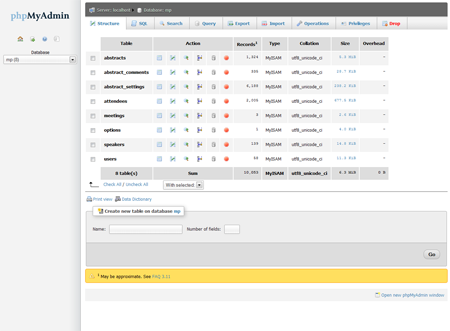

Let me know if you face any problems, I’ll try my best to respond.If disaster strikes your WordPress site, your first thought should be to restore it from a backup. Easy right? Don’t forget to delete or move adminer.php after your work is done, to avoid security loopholes. You will then be prompted to save the backup of your WordPress database YourDBName.SQL extension file which can later be imported (restored) using the Import function in Adminer. On Adminer Export page, select ‘ save‘ radio button on Output and click Export. But right now, we’re doing backups!įrom the top left side, click ExportLink.
You can analyze, check, repair, optimize and delete tables. It’s basically a tiny version of phpMyAdmin but more powerful. Just carefully copy and paste them into their appropriate text fields on Adminer’s login page, without quotes.Īfter clicking Login, Adminer will list all your Database tables and what’s inside them. In the red squared section, you can see the all the required MySQL credentials defined in a proper way. Here’s what the inside contents of file look like. If you don’t have the login details, don’t worry you can re-acquire them from wp-config.php file that is found in root directory of your WordPress site.ĬPanel example path to WordPress configuration file: /home/YourUsername/public_html/wp-config.php Then enter the full database name, User and password and click login. Leave the Database Server to localhost, don’t change it. It should show a Adminer Login page asking you for MySQL credentials. Make sure that the file is accessible through Domain or IP. The folder usually has same name as your domain name. It is the directory where the WordPress’s are stored. Note:The adminer-4.7.6.php file must be in the Document root. This can be done through Filezilla FTP client or you could simply upload it through cPanel/Plesk File Manager. Now we need to upload the Adminer’s php file to and make it access from our website. How to Backup/Restore your WordPress site Database without phpMyAdminĭownload the latest version of Adminer database management tool from here. Supported Database Servers: MySQL, MariaDB, PostgreSQL, SQLite, MS SQL, Oracle, SimpleDB, Elasticsearch or MongoDB.įTP Access or cPanel/Plesk File Manager: For uploading a file to document root. PHP: Version 5.0+, PHP 7.2, 7.3 any 7.0+ version will do.



 0 kommentar(er)
0 kommentar(er)
